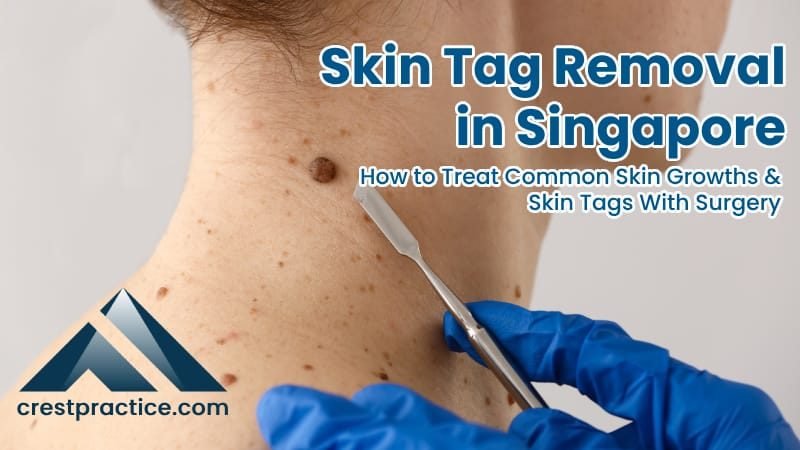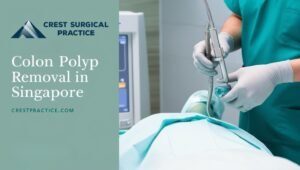Nearly half of all adults have skin tags. People often want to remove these benign growths for cosmetic reasons, especially when located on visible areas like the face, forearm, or neck. Other common bumps on the skin include lipomas, sebaceous cysts, enlarged lymph nodes, and lumps. Most of these are benign but certain features warrant early consultation with a specialist. These include rapid increase in size, large growth bigger than 5cm or bumps that feel hard on palpation. Consulting a doctor about safe removal procedures is recommended.
Do you have a lump or bump on your skin that bothers you? If so, you may have a lipoma, a sebaceous cyst, a skin abscess, or a skin cyst. These are some of the most common types of skin growth that can affect people of all ages and backgrounds. While most of these growths are benign and harmless, they can sometimes cause pain, infection, or cosmetic concerns. A professional skin tag removal doctor may recommend a simple medical procedure to remove any that catch on clothing or cause pain. Let\’s explain what these growths are, how they are diagnosed, and how they can be treated with surgery.
What are Lipomas, Sebaceous Cysts, Skin Abscesses, and Skin Cysts?
Lipomas
A lipoma is a soft, fatty lump that grows beneath the skin, typically between the skin and muscle layers. Composed of mature fat cells enclosed in a thin capsule, these benign tumours can develop anywhere on the body but most often appear on the neck, shoulders, back, arms, and thighs. Lipomas are painless, movable, and unchanging in size or shape. But sometimes it can disrupt nearby nerves, blood vessels, or organs. However, they are mostly noncancerous and generally do not pose serious health risks. There can be a small risk of cancer in certain groups of patients. Any rapid increase in size should raise suspicion.
Sebaceous Cysts
A sebaceous cyst is a small, benign growth that develops when a sebaceous gland becomes blocked. These glands produce sebum, an oily substance that lubricates the skin and hair follicles. The cyst forms a firm, round lump under the skin, filled with sebum, keratin, and sometimes bacteria. Sebaceous cysts can occur anywhere sebaceous glands exist, including the face, neck, torso, and groin. Though typically painless and slow-growing, they may become inflamed, infected, or rupture if left untreated.
Skin Abscesses
A painful, swollen, red, and warm skin abscess forms when bacteria infect the skin and create a pus-filled pocket. These bacterial infections often enter through wounds, hair follicles, sweat glands, or oil glands. Skin abscesses can occur anywhere on the body but most frequently develop on the face, neck, armpits, buttocks, or groin. In addition to the visible symptoms, skin abscesses may also cause fever, chills, or general discomfort.
Skin Cysts
Skin cysts are sacs or capsules in the skin that contain fluid or solid material. There are several common types of skin cysts, including epidermoid, pilar, dermoid, and ganglion cysts, which vary in their causes and characteristics. Skin cysts can form anywhere on the body but most often develop on the face, scalp, neck, trunk, or limbs. Typically painless and slow-growing, skin cysts may sometimes become inflamed, infected, or ruptured.
How are Lipomas, Sebaceous Cysts, Skin Abscesses, and Skin Cysts Diagnosed?
To diagnose a lipoma, sebaceous cyst, skin abscess, or skin cyst, our expert doctors will examine the growth skin. We ask about the symptoms, history, and risk factors. Our doctor may also perform some tests, such as:
- A biopsy involves taking a small sample of the skin growth and sending it to a lab for microscopic analysis. It can confirm the diagnosis and rule out any cancerous or suspicious cells.
- An ultrasound uses sound waves to create an image of the skin growth and surrounding tissues, showing the size, shape, and location of the growth. It can also detect any fluid or blood inside the growth.
- A CT scan or MRI creates detailed images of the skin growth and surrounding tissues by using X-rays or magnetic fields. These scans can reveal the extent, depth, and complexity of the growth and detect any involvement of nearby nerves, blood vessels, or organs.
How are Lipomas, Sebaceous Cysts, Skin Abscesses, and Skin Cysts Treated with Surgery?
The main treatment option for large, growing, or symptomatic lipomas, sebaceous cysts, skin abscesses, and skin cysts is surgical removal, which can eliminate the growth and prevent recurrence or complications. Surgery improves the appearance and function of the affected area while reducing risks of infection and malignancy. Surgical techniques include:
Excision
It involves making an incision on the skin and cutting out the skin growth and some surrounding tissue. The wound is then closed with stitches or staples. Excision is the most common and effective technique for removing lipomas, sebaceous cysts, and skin cysts. It ensures complete removal and minimal scarring.
Drainage
It involves making a small opening on the skin and squeezing or suctioning out the fluid or pus from the skin growth. The wound is then left open or covered with a dressing. Drainage is the most common and effective technique for treating skin abscesses, as it relieves the pressure and pain and clears the infection.
Laser
It involves using a high-intensity beam of light to vaporize or cut through the skin growth. The wound is then left open or covered with a dressing. Laser is a less invasive and more precise technique for removing small or superficial skin growths, as it causes less bleeding, pain, and scarring.
Cryosurgery
It involves using a cold probe or spray to freeze and destroy the skin growth. The wound is then left open or covered with a dressing. Cryosurgery is a less invasive and more selective technique for removing small or superficial skin growths, as it causes less damage to the surrounding tissues.
What are the Benefits, Risks, and Complications of Surgery for Lipomas, Sebaceous Cysts, Skin Abscesses, and Skin Cysts?
Surgery for lipomas, sebaceous cysts, skin abscesses, and skin cysts has many benefits, such as:
- It can remove the skin growth completely and prevent it from recurring or becoming complicated.
- It can improve the appearance and function of the affected area and reduce the risk of infection or malignancy.
- It can relieve the symptoms, such as pain, discomfort, or cosmetic concerns, caused by skin growth.
- It can improve the quality of life and self-esteem of the patient.







